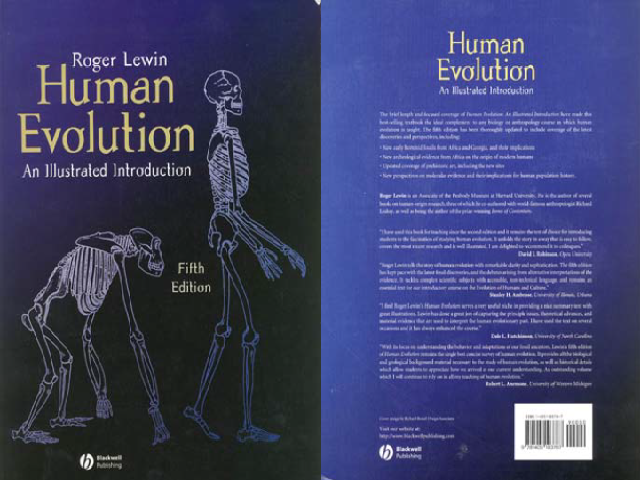Lewin, R. 2005. Human evolution (5th edition). – Oxford, Blackwell Publishing
Abstract
All books on the evolution of humans, hominoids, anthropoids or the like are now outdated. The reason for this bold statement is the discovery in November 2004 of Homo floresiensis, the diminutive Indonesian hominid that is most probably a Homo erectus that got stuck on the island of Flores and subsequently dwarfed. Contenders there are enough, as is always the case when something new and unexpected turns up. Homo floresiensis, or ‘the Hobbit’ as it is now vernacularly called, is no aberrant individual, no case of pathologic microcephaly, no accidental midget. It is a truly dwarfed Homo, and as such similar to dwarf elephants, dwarf hippos and dwarf deer found on other islands in California, the Mediterranean, Indonesia, or the Philippines. This fact is remarkable as such. It is the more remarkable as it proves that Homo behaves just like any other larger mammal species from an evolutionary point of view. THAT is the real bone of contention. Ever since the early days of Christianity, via T.H. Huxley in the 1860s (see page 3 in the first chapter of this book), down to the present day, people have a tendency to consider Homo as something quite different from the animal kingdom. Yes, animals can evolve in response to environmental changes, okay for that, but man? When large mammals have to adapt to a life on the savannah, they become agile, long–legged striders. So does Homo. When large mammals become isolated on oceanic islands, they dwarf. So does Homo, we now know. Our bipedality and the discovery of the floresian Hobbit are two arguments in favour of our mammalness. Read more...
Downloads




